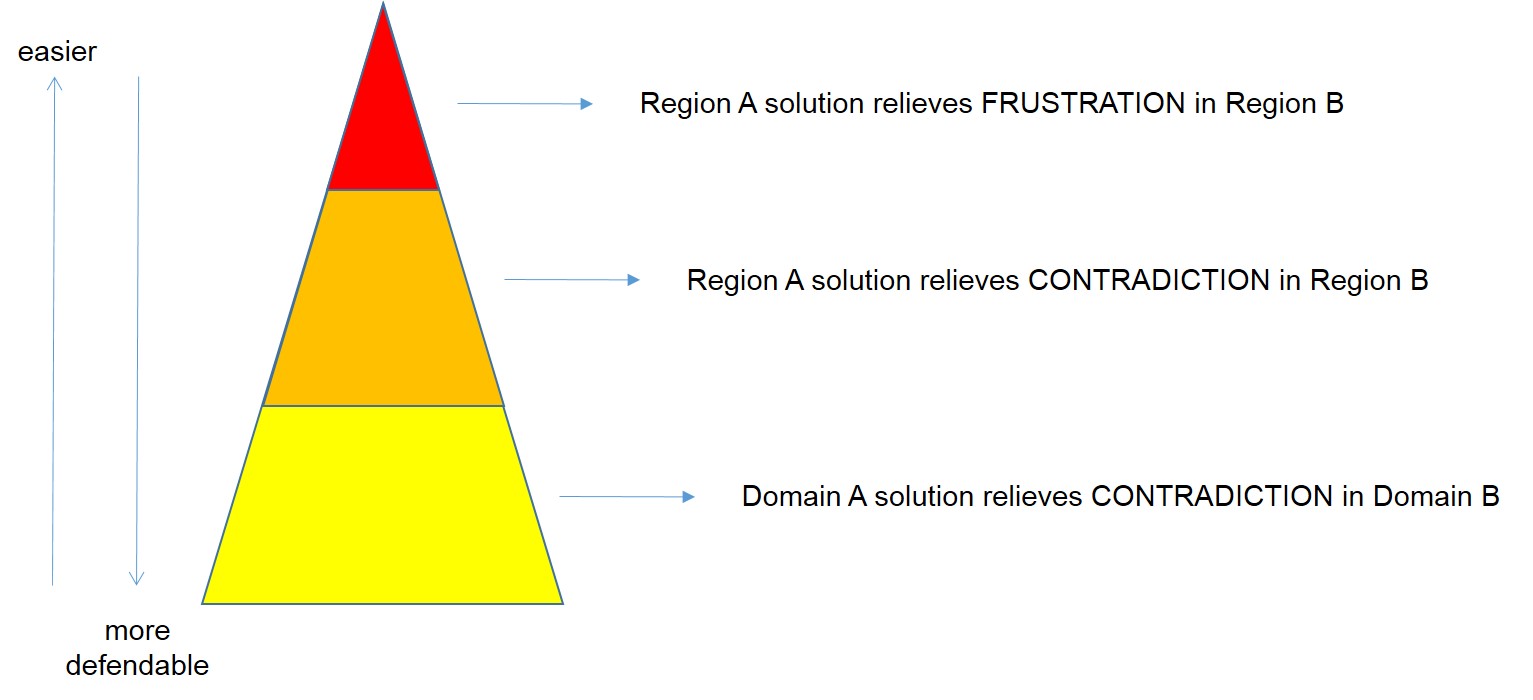A lot of organisations talk about the size of their innovation attempts in terms of hops, steps and jumps. The accompanying logic is that the ‘low-hanging-fruit’ hops are ‘easy’ and the ‘breakthrough’ jumps are difficult. To a large extent that perception is correct. But it’s also a contradiction, and therefore an innovation opportunity in its own right. Solving the contradiction would mean something of a business holy grail: ‘easy breakthrough’.
The main precept of Systematic Innovation is ‘someone, somewhere already solved your problem’. Which means there must be examples of these kinds of low-hanging fruit jump innovations out there. And sure enough there are plenty to be seen. Spend enough time analyzing them all and a pretty clear theme begins to emerge: so far there are three ways to create a ‘low-hanging breakthrough’:
The easiest of the three is all about a geographic transposition: A proven solution from Region A is introduced into Region B and is successful because it removes or reduces an underlying customer frustration present in that region. Typically all that is required to make these kinds of translation into a success is a big enough marketing or messaging twist to overcome any issues of IP (principally copyright) infringement.
The middle of the three is another variant on the geographic transposition. This time, a proven solution from Region A is introduced into Region B and is successful because it resolves a contradiction experienced by customers in that region. Solving the contradiction typically involves another twist relative to the original solution, but this time the product or service itself (as opposed to just the messaging) is very likely to change. The phenomenal success of probiotic yogurt drinks like Actimel in the West in recent times represents a great example of a simple pair of contradiction-solving product design twists on the original solution, the Turkish drink, kefir. The twists in question being: make it taste nice and make it ultra-convenient.
The third low-hanging-breakthrough category we can see lots of examples of is about a transfer of proven solutions from one domain to another. A solution in Domain A is used to solve a frustration or, more usually, contradiction in Domain B.
As with all things in life, whenever we solve one contradiction – easy breakthrough in this case – the next one quickly reveals itself. In this case it probably has something to do with the likely longevity and protectability of the new solution. If all you’ve done is given a new name twist to a product you discovered on the other side of the planet, then by all accounts it will be easy for anyone else to do the same thing. But then, hey, that’s merely a contradiction too, right? And someone, somewhere will already have solved that one for you too. The main trick, as ever, is staying one contradiction ahead of everyone else. The less obvious, but probably more important precursor is developing the capability to map and track the contradictions and frustrations of potential customers in other Regions and Domains to yours.

